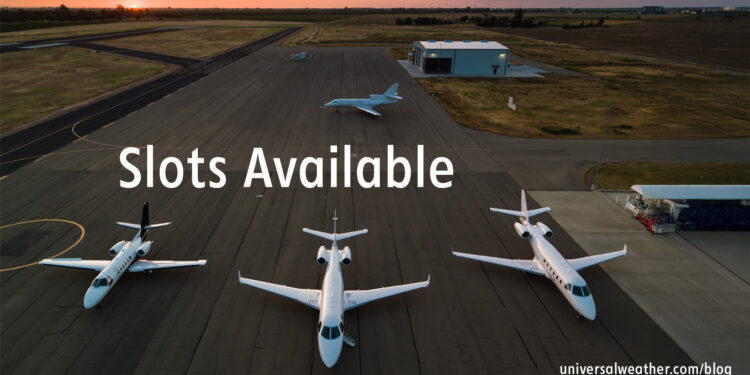5 Tips for Making Airport Slots in Australia Easy

This business aviation blog post is part of a series on operating in Australia.
For business aircraft operators, airport slot requirements and revisions are not onerous in Australia, but there are some unique considerations to keep in mind. The following is the information you need to know for airport slot requirements:
1. Figure out which airports require slots. It varies by airport
Sydney (YSSY) and Perth (YPPH) are the only airports in Australia requiring airport slots for both arrival and departure. Brisbane (YBBN) mandates arrival slots only when the previous departure point is within 120 NM of YBBN, as this assists airport authorities in managing airport traffic. Airport slots may be required at other locations in Australia from time to time when large local events are to take place.
2. Know the airport slot request procedures
Airport slot requests are the same, irrespective of the type of operation (scheduled commercial, charter or private non-revenue). These requests are made with Airport Coordination Australia via e-mail. If your requested airport slot time is denied, the coordination office will advise which next closest airport slot is available. Your ground handler may be able to “fine tune” the airport slot time to a better one by making a verbal request after 6 pm the night prior to operations. Airport slot deviation is -/+ 15 minutes for domestic flights and -/+ 30 minutes for international flights. Avoid peak times of 0700-0900 local and 1600-1900 local at YSSY and between 0500-1000 local Monday through Friday at YPPH.
3. Understand correct documentation and procedures
When requesting airport slots through the airport slot coordinator, always include the tail number, type of flight, and schedule. No fees are associated with Australian airport slots. An airport slot number will be provided but does not need to be included in the remarks section 18 of the flight plan. Be aware, however, that you’ll need a landing permit (charter permission) if your operation is charter. Arrival and departure slots are always required at YSSY and YPPH, including quick-turn tech stops.
4. Be mindful of noise curfews and restrictions
Stage 2 aircraft are not automatically permitted to operate in Australia. Even upgraded stage 2 aircraft (hush-kitted) must apply for waivers to operate into five major Australian cities, but it’s best to always check current restrictions with your 3rd-party provider, as regulations may change. YSSY and YPAD have a 2300-0600 local curfew in place, restricting certain aircraft types from operating during these times. YBCG has night restrictions for larger aircraft. It’s best practice to review curfew requirements in advance with your 3rd-party provider.
5. Request airport slots early
It’s always best to request airport slots early (seven days in advance when possible), as airport slots may impact parking, particularly for larger aircraft. While there’s no set timeframe or minimum-notice requirement for requesting airport slots, be aware that availability will diminish the closer you are to day of operation. Bear in mind that charter operations are given priority over private non-revenue flights at airports in Australia.
Conclusion
Australia is a welcoming environment for business aviation, and operations here are often more flexible than in other regions of the world. You do run the risk, however, of potential regulatory repercussions for things such as violating a curfew restriction, if not fully versed on local operating rules. Use your 3rd-party provider as a resource during the pre-trip planning stage to obtain all the required information for your trip.
Questions?
If you have any questions about this article, contact me at christinevamvakas@univ-wea.com.
Later, we’ll discuss tips for flight permits and PPRs in Australia.




